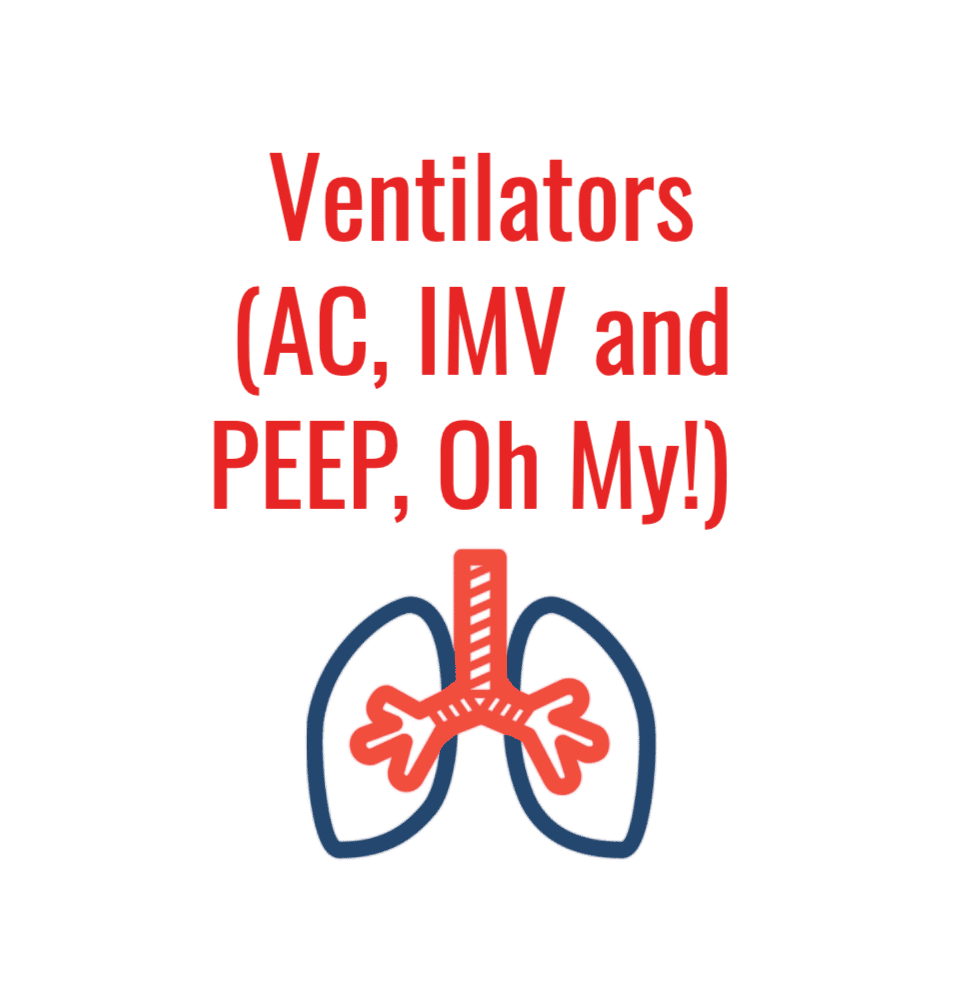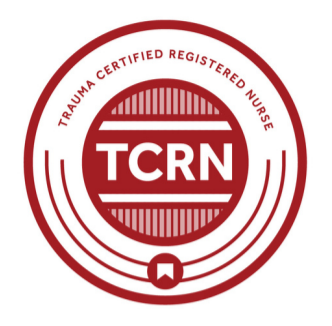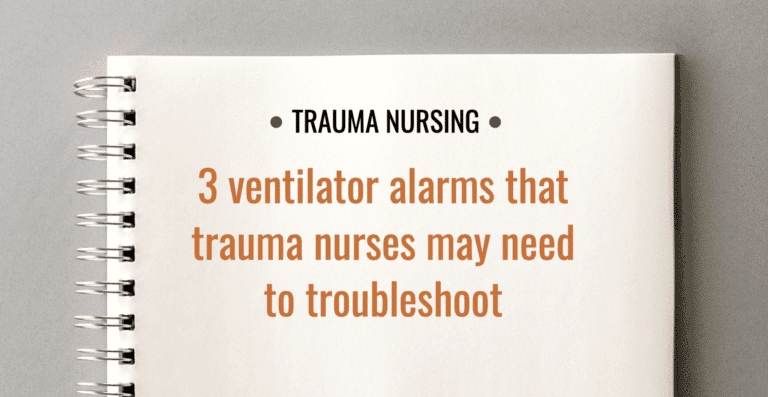Mechanical ventilators include several system alarms. Alarm limits are usually set by a respiratory therapist, but trauma and emergency nurses should understand the various alarms so they can address potential problems quickly.
This article describes how to troubleshoot three of the most common ventilator alarms. No matter which alarm you are responding to, it is important to remember a key general principle:
Check the patient first and the equipment second.
Equipment problems can usually be corrected quickly. In contrast, a missed patient event can have dire consequences. When in doubt, manually ventilate the patient using a bag valve mask (BVM) until someone can thoroughly check the equipment.
1. High-pressure limit
Excess pressure from mechanical ventilation can lead to alveolar overdistension. Overdistension can reduce blood flow to the alveoli, rupture weakened alveoli and cause dangerous inflammatory changes in lung tissue.
A high-pressure alarm will sound when the ventilator senses that pressure within the ventilator circuit is higher than the selected setting. The high-pressure limit is one of the most common ventilator alarms encountered by nurses.
Check the patient:
- Is the patient coughing? Coughing is the most common cause of high-pressure alarms. If the patient is forcefully coughing into the circuit, the ventilator will sense the high pressure.
- Is the patient “fighting” the ventilator? Another common cause of a high-pressure alarm is patient-ventilator dyssynchrony. Check to see whether the patient needs to be suctioned. If not, the patient probably needs more sedation.
Check the equipment:
- Is there a kink in the tubing? Of so, straighten the tubing.
- Is there water in the line? Fluid condensation in the ventilator circuit can create resistance to airflow. Drain the tubing back into the collection chamber (not into the patient).
2. Low exhaled tidal volume
A low exhaled tidal volume alarm will sound when there is air loss between the breath delivered by the ventilator and the air that is returned to the ventilator with exhalation. Where did the air go?
Check the patient:
- Is there a pneumothorax or a bronchiole disruption? Either condition can allow air to escape into the patient’s body. Assess the patient and if pneumothorax or bronchiole disruption is suspected, call for help immediately. Continued positive pressure ventilation in either of these scenarios will puff the patient up with subcutaneous air.
Check the equipment:
- Is there a break in the tubing of the circuit? Start at the patient end and follow the tubing all the way back to the ventilator insertion point. Patients frequently become disconnected from the ventilator at the endotracheal tube due to patient movement or a loose connection. If you find a break in the line, reconnect the two tubes.
- Is the cuff on the airway tube underinflated? If the cuff is not properly inflated, air will leak around the cuff during positive pressure ventilation. This air leak can often be heard by listening near the patient’s head. To remedy this problem, reinflate the cuff to 20-30 mmHg (or per your institution’s policy).
3. High respiratory rate
This common alarm is self-explanatory — the patient is breathing too fast.
Check the patient:
- Is the patient anxious or in pain? Provide emotional support to calm your patient. Medicate the patient as needed for sedation and pain.
- Is the patient coughing or gagging (or laughing)? These actions can be sensed by the ventilator as a high respiratory rate.
Check the equipment:
- Is there vibration in the patient environment? Vibration can trigger the ventilator to believe the patient is attempting to take a spontaneous breath.
- Is the patient receiving chest physiotherapy? Another possible source of vibration.
- Is there water in the line? Fluid condensation in the tubing can be sensed by the ventilator as an attempt at a breath.
In general, look for the source that is sending false information to the ventilator and correct it.




1 Comment
Thank you